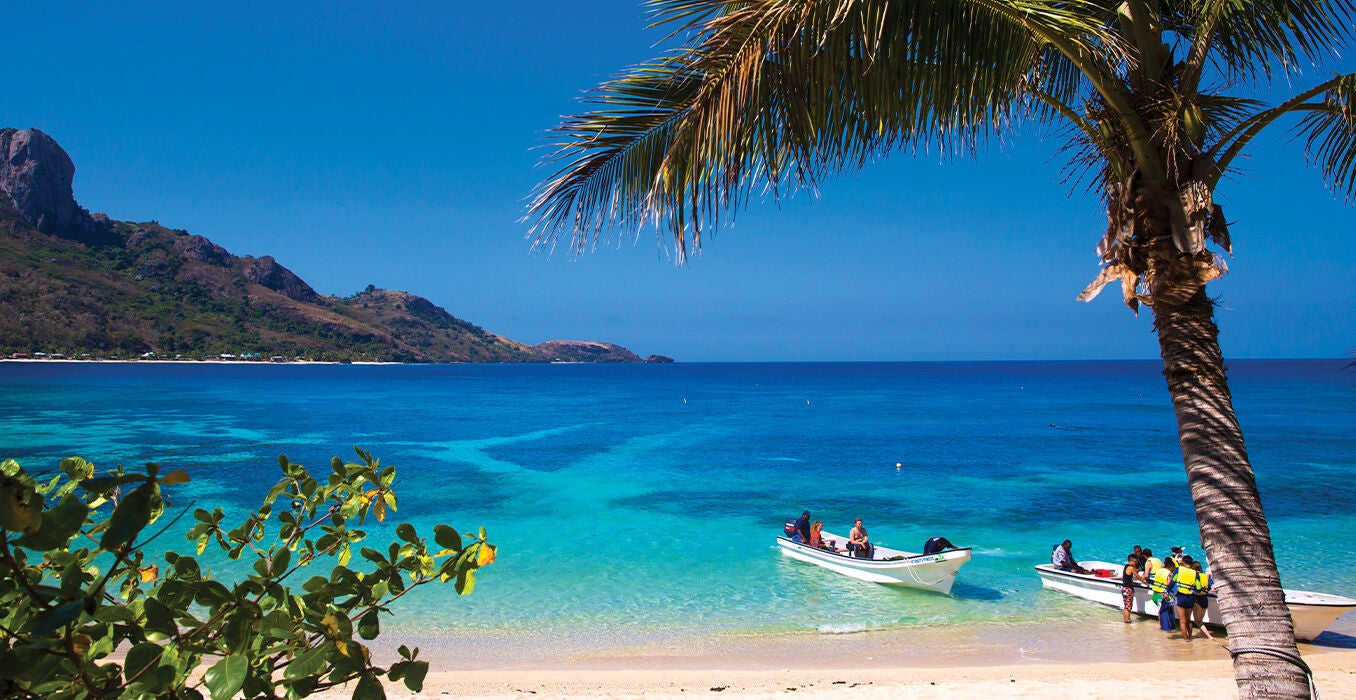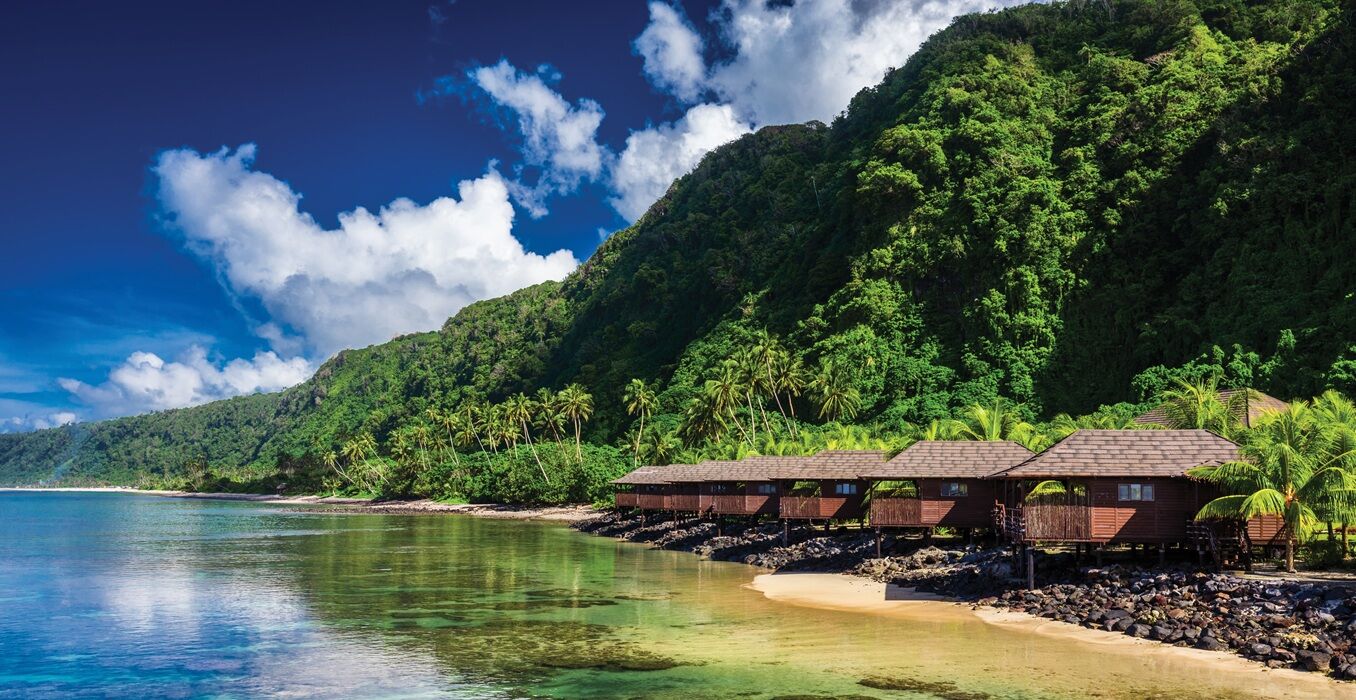Hotels, Tourism & Leisure -
Pacific comeback

Photo credit: Tourism Fiji
The islands are calling and there are investment opportunities across the price and location spectrum.
Bayleys national director hotels, tourism and leisure sales, Wayne Keene says the broader Pacific region is seen as an investment hub, and the Pacific Islands are attracting significant interest from hotel brands looking to expand their portfolio footprints, and from entrepreneurial operators seeking opportunities in the broader tourism sector.
“I think opportunity is the key word here. The Pacific Islands still have an element of mystique about them – a promise to take you away from your usual life to places where you can have an authentic travel experience, surrounded by ocean and palm trees and just a quick plane journey from New Zealand.
“Bayleys has marketed property in Fiji, the Cook Islands and Samoa and these offerings always attract good interest – even if some of it is aspirational day-dreaming! We’ve had considerable success in the Fiji market, and we have some amazing properties for sale there currently.
“The islands will always hold a special place for New Zealanders. Increasingly, private buyers are looking for leisure property investments where they can have a more permanent stake in these holiday destinations, while investors are encouraged by strong visitor numbers and seeking tourism-aligned assets.”
Three-hour flight to paradise
Fiji said “bula” to more than one million visitors in 2024, the highest annual total ever recorded in the country, with nearly 226,000 of those visitors from New Zealand. Tourism accounts for 40 percent of the nation’s gross domestic product (GDP) so there’s no denying the importance of the sector, says Philip Toogood, managing director and partner in Bayleys Fiji & Pacific.
“There’s a lot happening in Fiji, with good property and business opportunities for buyers across the price bands and locations.
“We have options from waterfront estates with fractional ownership potential for private buyers through to commercial accommodation stock of varying typologies including resorts, backpacker operations, bare land sites – and everything in between.”
Referencing stock in the market currently, Toogood says it’s all about choice and there are some very good opportunities on offer – including two mortgagee sales that will find traction with astute investors.
“While tourism numbers have rebounded quickly, the pandemic and ensuing business disruption took a toll on some owners and operators. Someone will scoop up these stressed assets and turn them around knowing that Fiji’s epic tourism fundamentals will always be there.”
Two properties for sale under mortgagee conditions are the 14-room Emirates Hotel on 4,386sqm freehold land just outside Nadi town with potential for significant upgrading or strategic redevelopment, and the world-class 5-star Dolphin Island Resort, a freehold property for resort owner-operators, exclusive resort chains, or discerning private owners.
Toogood says the market overall is humming with heightened enquiry and activity from buyers and developers, with strong inventory either already on the market or soon to come up for sale.
“For example, at Wailoaloa Beach, Nadi we’re selling the luxury beachfront resort Hotel Bulabard, Club Fiji Resort, Smugglers Cove Beach Resort, and a 2.4ha development site which could support a significant accommodation offering.
“We’re marketing the private freehold resort Savasi Island which is a very successful business for its retiring American owners, and the under-construction masterplanned resort apartment complex Radisson Blu Mirage, Naisoso Island where around 80 percent of the 144 freehold strata units have already sold off the plans.”
Toogood says there are some smart resorts in the pipeline, and he points to one project where preliminary work is underway.
“Bayleys sold land with a tourism lease in place to Kerzner International, and it is progressing a development on amazing Balawi beach in the Yasawa Islands, under ultra-luxury accommodation brand One&Only.
“People with vision quickly see that Fiji is a truly special place and it’s no surprise that renowned international brands see value here. Having lived here for nearly 20 years myself, I can tell you that Fiji gets under your skin – it’s a place that keeps calling you back, and that’s why tourism is assured.”

Where happiness comes naturally
The Asia-Pacific Hotel Industry Conference and Exhibition (AHICE) Fiji Investment in Tourism Summit will take place in June this year with Brent Hill, chief executive officer for Tourism Fiji, among the speakers.
With Tourism Fiji’s playful catchphrase “where happiness comes naturally” as a starting point, Hill says he has several key messages to convey given the entity is targeting an increase of circa-$1 billion in the visitor economy to the end of 2027. New Zealand and Australia are core markets, but there’s evidential growth from the US and Canada, and an anticipated increase from China if a mainland China direct flight is instated.
“We believe that with increasing accommodation capacity, increase in spend, new projects coming on stream, and continued strong marketing, we can realise tourism sector growth and ambition.
“There is traction in investment and some significant projects are under construction like the Vatu Talei-The Jewel project on Denarau Island, Radisson Blu Mirage on Naisoso Island, and the Hilton Garden Inn Hotel in Suva, but there is still scope for a lot more.
“With increased flight schedules and ongoing demand from visitors, there are gaps in the market for astute investors to fill as Fiji is under-supplied when you consider some of our competition – we simply don’t have the brands or size of hotel stock that Hawaii, the Caribbean, Mexico or Bali has.”
There’s capacity for more high-end luxury island resorts, modern business/conference hotels, branded resorts, and boutique villa type properties, says Hill.
“Fiji is low density, has a relatively modest number of tourists, and a very manageable, sustainable environment. It’s not crowded, but demand from tourists is clearly there and it’s growing.
“Fiji is a destination offering investors solid yield, underpinned by a broad base of visitors coming in from countries where the dollar goes a long way. Coupled with that is a skilled talent pool of both locals and expats, attractive labour costs, and the presence of modern construction companies – so the environment is really positive for investment and development.”
The refurbishment and add-value investment sector is one Hill identifies as having significant opportunity, due to the ability to turn projects around relatively quickly to bolster room supply.
“There are some properties that either haven’t reopened since the pandemic or have struggled to resume business, and they would benefit from new owners, capital investment and upgrades.
“One example of this is the recent acquisition of Beachcomber Island Resort, which has new owners. Existing rooms are progressively being upgraded, new rooms are planned and the resort is attracting solid bookings.”
Accommodation capacity is just one part of the Fiji tourism picture, with Hill saying infrastructure is also critical.
“Right now Fiji is handling the numbers reasonably well, but for more growth we’ll need significant upgrades to roads and routes, upgrades at Nadi International Airport, further water harvesting and renewable energy options to handle increased load, and lower dependence on fossil fuel to keep costs manageable.
“All of these elements are under consideration right now, but would definitely need partnerships and offshore capital to assist and make the projects viable.”
Hill explains that the Fiji government does offer a range of investment incentives to encourage foreign direct investment, and it is focused on reducing red tape and speeding up approval processes.
“A Fiji Investment Facilitation Committee, chaired by the Deputy Prime Minister and Minister for Trade, was recently established to consider policies and incentives aimed at attracting sustainable and innovative investment and facilitating business growth.”
Tropical tourism
In the Cook Islands, visitor expenditure equates to around 70 percent of GDP with tourism supporting local livelihoods and job creation, and underpinning economic stability and community wellbeing across all its islands.
A Cook Islands Tourism spokesperson says the emphasis is on sustainable growth as visitor numbers return to pre-pandemic levels and beyond. The focus is on high-value, low-impact visitation with its primary target markets being New Zealand and Australia where there is strong flight connectivity, with growing interest from North America and Europe.
In terms of investment opportunity, the spokesperson says the Cook Islands offers political stability, ease of doing business, and close proximity to New Zealand, with few restrictions on foreign investment in many sectors.
“There is strong visitor demand for boutique accommodation, eco-resorts, and unique travel experiences, especially outside of Rarotonga – such as offered by Aitutaki and other outer islands.
“A recent Cook Islands government review has focused on modernising the investment framework and improving the ease of doing business, including streamlined processes and updated regulatory guidance. This work aligns with Trade and Investment Policy goals to foster a more transparent, investor-friendly environment that supports sustainable economic growth.”
Like many other Pacific Islands – and, New Zealand for that matter – the Cook Islands needs investment in infrastructure to support growth.
“Key areas include renewable energy, water and waste systems, and outer island transport and accommodation infrastructure. Strategic partnerships with offshore capital can accelerate development, bring in expertise, and support long-term economic resilience,” explains the spokesperson.
Samoa on the investment radar
In Samoa, tourism is an important component of the economy contributing around 25 percent of GDP. The nation has strong visitor numbers from New Zealand and Australia, and identified growth from US and Asian markets. Samoa is also an emerging cruise ship destination with a reported 27 cruise ships scheduled to visit in 2025.
The Samoa Tourism Sector Plan 2022/2023 – 2026/2027 focuses on how the nation can deliver more sustainable, inclusive and resilient tourism policies, strategies and outcomes. The plan outlines that the survival of the tourism sector will rely on investors who take a long-term view of their investments, and in providing an enabling environment to support growth and investment in tourism-related businesses.
There are identified growth opportunities for hotels, eco-resorts, cultural tourism, and adventure tourism, and while foreigners cannot own land in Samoa, long-term leases are available.